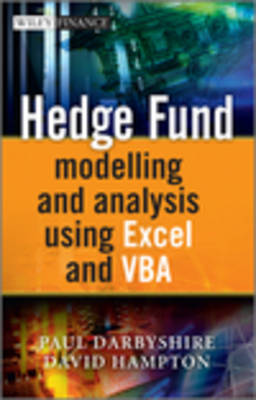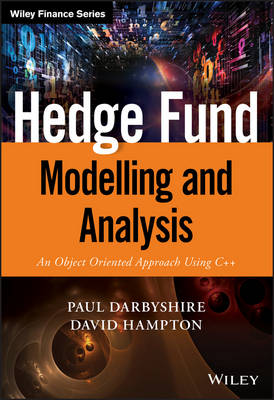The Wiley Finance
1 primary work • 3 total works
Book 644
Hedge Fund Modelling and Analysis Using Excel and VBA
by Paul Darbyshire and David Hampton
The book provides hands-on coverage of the visual and theoretical methods for measuring and modelling hedge fund performance with an emphasis on risk-adjusted performance metrics and techniques. A range of sophisticated risk analysis models and risk management strategies are also described in detail. Throughout, coverage is supplemented with helpful skill building exercises and worked examples in Excel and VBA.
The book's dedicated website, www.darbyshirehampton.com provides Excel spreadsheets and VBA source code which can be freely downloaded and also features links to other relevant and useful resources.
A comprehensive course in hedge fund modelling and analysis, this book arms you with the knowledge and tools required to effectively manage your risks and to optimise the return profile of your investment style.
Low interest rates, overcrowded markets and greater regulatory oversight are just some of the many reasons it is close to impossible for hedge funds to draw competitive returns. The solution for many hedge fund managers, quantitative investment analysts and risk managers is to adopt new technologies, platforms and programming languages to better manage their risks and maximise the benefits of their return profiles.
Hedge Fund Modelling and Analysis is a full course in the latest analytic strategies for hedge fund investing, complete with a one-of-a-kind primer on both C++ and object oriented programming (OOP). Covering both basic and risk-adjusted performance measures, this practitioner's guide enables you to manage risk easily and make the most of key statistics with simple and advanced analysis techniques. This highly anticipated third book in the widely used Hedge Fund Modelling and Analysis series is the only guide available for applying the powerful C++ language to revolutionise hedge fund trading. Even if you've never worked with code before, the focused overview of C++ gives you everything you need to navigate the technical aspects of object oriented programming, which enables you to build sophisticated analysis programs from small units of reusable code. This book is your breakthrough introduction to winning with hedge funds in the new reality of trading.
Jumpstart your new approach to beating the markets with:
- All the guidance and hands-on support you need to use quantitative strategies to optimise hedge fund decision-making.
- Illustrative modelling exercises and worked-out problems demonstrating what to expect when assessing risk and return factors in the real world.
- A companion website offering additional C++ programs, algorithms and data to download.
Make reading Hedge Fund Modelling and Analysis your new routine and gain all the insight and relevant information you need to beat the markets.
Hedge Fund Modelling and Analysis using MATLAB
by Paul Darbyshire and David Hampton
The second book in Darbyshire and Hampton's Hedge Fund Modelling and Analysis series, Hedge Fund Modelling and Analysis Using MATLAB (R) takes advantage of the huge library of built-in functions and suite of financial and analytic packages available to MATLAB (R). This allows for a more detailed analysis of some of the more computationally intensive and advanced topics, such as hedge fund classification, performance measurement and mean-variance optimisation. Darbyshire and Hampton's first book in the series, Hedge Fund Modelling and Analysis Using Excel & and VBA, is seen as a valuable supplementary text to this book.
Starting with an overview of the hedge fund industry the book then looks at a variety of commercially available hedge fund data sources. After covering key statistical techniques and methods, the book discusses mean-variance optimisation, hedge fund classification and performance with an emphasis on risk-adjusted return metrics. Finally, common hedge fund market risk management techniques, such as traditional Value-at-Risk methods, modified extensions and expected shortfall are covered.
The book's dedicated website, www.darbyshirehampton.com provides free downloads of all the data and MATLAB (R) source code, as well as other useful resources.
Hedge Fund Modelling and Analysis Using MATLAB (R) serves as a definitive introductory guide to hedge fund modelling and analysis and will provide investors, industry practitioners and students alike with a useful range of tools and techniques for analysing and estimating alpha and beta sources of return, performing manager ranking and market risk management.


